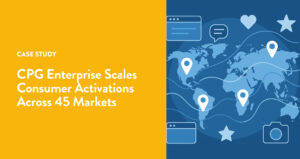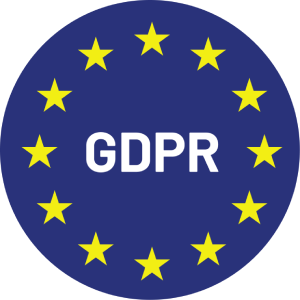Ten years ago, Target made headlines for a first-party data fail that became an object lesson in first party data versus zero-party data. It’s a story from the “Privacy-Last” era of marketing in which brands didn’t think through the repercussions of their actions. This story and others like it offer insight into the current privacy-first era.
Consumer data requires consumer trust
Consumer data fuels the marketing industry. Over the last two decades, companies have sought to obtain as much data as possible about as many consumers as possible. At the same time, marketing technology vendors made it easy to capitalize on the gathered information by providing systems designed to aggregate, interpret, and activate all of that data. Unfortunately, consumer privacy was an afterthought.
Consequently, consumer trust in brands plummeted during the privacy-last era. In 2014, Deloitte reported that 67 percent of people were happy to share their personal information with brands if it improved their experience. Only four years later, by 2018, an Acxiom report showed that number had dropped to 51 percent.
Without consumer knowledge or consent, their data was continuously tracked, interpreted, and activated to target consumers and personalize their experiences. Not surprisingly, the result was sometimes misdirected, unwelcome, or downright creepy.
First-party data fail: Target
It’s easy to understand why privacy matters so much to consumers when you’re confronted with a real-life example. Take Target’s story. A Target marketing campaign revealed a teenage daughter’s pregnancy to her father, without her consent and much to her horror.
How it happened
Target had developed an algorithm that leveraged in-store purchase data to predict when a consumer was expecting. Consumers who are expecting generally tend to make large purchases as they prepare for the needs of their growing family. Target wanted to make sure they were marketing to consumers at this time to fully take advantage of their opportunity to supply these expecting parents.
Target identified twenty-six products that expecting parents were likely to buy and then send coupons to these parents offering deals on pregnancy related products. However, Target didn’t have permission to send these coupons and the coupons were, by no means, private.
Secret revealed
After noting that this young woman bought one of these “pregnancy products,” Target sent coupons for deals on baby- and pregnancy-related products. When the father found the coupons in the mail addressed to his daughter, he was outraged that Target would encourage teenage pregnancy. The truth was that his daughter was pregnant. The father apologized to the store employees, and the blunder irrevocably compromised the teenager’s privacy.
The Privacy-First Era and the Rise of Zero-Party Data
Thankfully, times have changed. Privacy-conscious consumers and rapidly evolving privacy regulations (starting with GDPR in 2018) have permanently altered digital marketing. Among big tech platforms, Apple has taken a leadership role with respect to privacy.
They’ve introduced Privacy Nutrition Labels which facilitate transparency, and they’ve given consumers tools to protect their personal information. In June 2023, Apple announced Hide My Email, Mail Privacy Protection and Private Relay — three features in iOS15 and iCloud that obscure consumer identities and block behavioral, location, and device signals that many brands had come to rely on. Google and Facebook are now playing catch up.
Like Apple, forward-looking brands see privacy as a strategic opportunity to build trust with consumers, and differentiate themselves against competitors. They’re embracing transparent and ethical data practices built around zero-party data, which (on its own or in combination with first-party data) makes it easy to deliver highly personalized experiences that customers want — and avoid first-party data fails.
Zero-party data is personal context data that customers knowingly and intentionally share with a brand in exchange for value, like getting a more personalized experience that aligns with their values, attitudes, needs, preferences, interests, motivations, etc. Unlike first-party data (which is based on historical events and requires interpretation), zero-party data is explicit data that reflects how a customer wants to relate to a brand in the future, and why.
Learn more about how your brand can collect and use zero-party data. Contact us today.






